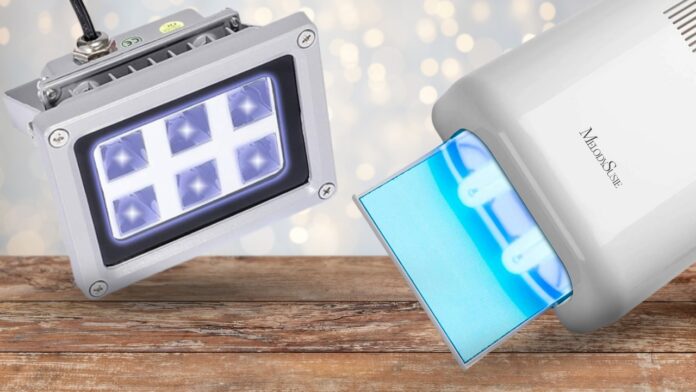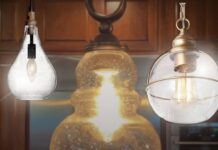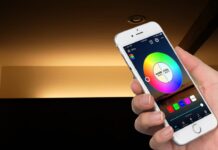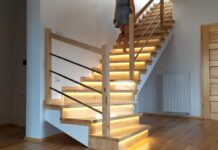Are you looking for the best UV lamp for UV resin? If so, you’ve come to the right place! In this blog post, I’ll be discussing the Top 5 Best Uv Lamp For Uv Resin on the market and what makes them so great.
So, whether you’re a beginner or an expert when it comes to using UV resin, keep reading for some informal advice. if you’re looking for another way to protect your eyes from the sun, you might want to consider using a UV lamp.
| Image | Title | Buy |
|---|---|---|
Top | ZOELASS Upgraded Big Chip 395nm UV LED Black Light fixtures with Gooseneck and clamp for UV Gel Nail and Ultraviolet Curing, Portable UV Blacklight 5V USB Input (Black 2W)… | Buy on Amazon |
 | Sovol 3D Printer UV Resin Curing Light for SLA DLP 3D Printer Solidify Photosensitive Resin 405nm UV Resin Affect, DIY Curing Enclosue | Buy on Amazon |
 | MelodySusie 36W Nail Lamp for Resin, Professional Gel Nail Polish Curing Lamp with 3 Timer Setting, Sliding Tray for Manicure Pedicure Resin, Black | Buy on Amazon |
 | Aokitec 78W UV LED Nail Lamp, Professional Nail Dryer for Gel Polish Fits Fingernail & Toenail, Nail Light with 4 Timer Setting, Auto Sensor Gel Lamp for Home and Salon Use | Buy on Amazon |
 | Dimmable LED Gooseneck light 3W 395nm UV LED Black Light and 5W LED clamp work light daylight with gooseneck and clamp for Fishing, Black Painting or UV Resin Curing, 5V USB Input… | Buy on Amazon |
1. Upgraded Big Chip 395nm UV LED Black Light:
- Visionary Shamanic UV artist RECOMMOND
- 30% BRIGHTER, with Upgraded single big Chip UV LED Black light fixture from double chip 395nm UV LED
- STURDY & COMPACT & FLEXIBLE, UV LED Desk light with a 10 long UPGRADED 8MM strong gooseneck.
We are proud to introduce our upgraded 395nm UV LED black light fixtures! These new fixtures feature a gooseneck and clamp for easy positioning, as well as a 5V USB input for easy power connection. Our UV LEDs emit powerful ultraviolet light that is perfect for curing UV gels, resins, and adhesives. This portable black light is perfect for use in the home, office, or salon.
The Visionary Shamanic black light is 30% brighter than common 395nm UV LEDs, with an upgraded single big chip. It has a strong and concentrated beam, which makes it great for curing UV resin and detecting fluorescent paint, stains, and poster inks.
The light is made of sturdy materials and is compact and flexible. The 10″ long gooseneck is upgraded to 8mm, which is stronger than the common 6mm gooseneck. The light can be easily positioned to get the perfect curing angle for your project.
The Visionary Shamanic blacklight requires a constant voltage 5V DC power supply for operation. A power adapter, power bank, or computer can be used as a power source. If the light is not working or flickering, you may need to test with a different power supply. LED at 3-4V has been proved to work correctly.
2. Sovol 3D Printer UV Resin Curing Light:
- The UV LED lamp uses 6 high-power 405nm UV LEDs to quickly cure 405nm UV resin prints.
- The resin can cure in 10-15 seconds from a distance of 5 cm from the light.
- Due to the strong ultraviolet light output, please use eye protection when using this light.
- Uses: UV curing, resin curing (SLA DLP print curin
The Sovol 3D Printer UV Resin Curing Light is a great choice for those looking to solidify photosensitive resin quickly and easily. This powerful curing light features a 405nm wavelength that is ideal for curing UV resins, and its compact design makes it perfect for use with SLA and DLP 3D printers.
The Sovol 3D Printer UV Resin Curing Light also features a built-in timer, so you can easily set it and forget it. The Sovol UV Resin Curing Light is a 405nm UV LED lamp that can be used for curing UV resins quickly and efficiently. The lamp has 36 LEDs that output a strong UV light, allowing the resin to cure in 10-15 seconds at a distance of 5 cm.
Thicker parts may require more time to cure. The Sovol UV Resin Curing Light can be used in DIY curing packages or handheld applications. Due to the strong ultraviolet light output, please use eye protection when using this light. UV curing, resin curing (SLA DLP print curing).
3.MelodySusie 36W Nail Lamp for Resin:
- Amazing Curing.
- 3 Timer Setting & Sliding Tray.
- Fast Drying Salon Edge Nail Lamp.
- Premium Materia
The MelodySusie Sol 1 Gel Nail Lamp is a top-quality UV nail lamp that offers professional salon results in minutes. It features a powerful 36W output that can shorten your curing time by 50% compared to other LED tail lamps on the market.
With 3 timer settings and a sliding tray, it’s easy to control the curing process and achieve perfect results every time. The large curing space ensures that you can cure all 5 fingernails or toenails at once, and the premium engineering ABS plastic construction is lightweight, sturdy, and healthy.
This nail lamp is an essential tool for any nail art technician or starter. The wavelength is 365nm, it is well-compatible with all kinds of gel nail polishes, 3D prints, LED gel polishes, jewelry resin, Acrylic gel, hard/builder/extension gel, poly gel, CND Shellac, nail sculpture gel, rhinestone gems glue.
120s/180s/30min timer setting to meet your different curing requirements well and make you control the curing time easily. The sliding tray ensures you can cure your resin, 3D prints, and toenail gel polishes perfectly and clean the nail lamp easily.
4.Aokitec 78W UV LED Nail Lamp:
- UV/LED Dual Light Sources Cure All Gels.
- Fast Drying and Save 70% Time with 56pcs 78W Powerful Beads.
- 10s/30s/60s/99s 4 Timer & Auto Sensor.
- Harmless White Light, No Blackening or Pain.
- Enough Space Fits Both Hands or Fe
The Aokitec 78W UV LED Nail Lamp is a great choice for those who are looking for a powerful and efficient nail dryer. With its dual light sources, it can work well with all kinds of gels, including base coats, soft gels, hard gels, acrylics, builder gel, and sculpture gel.
It also features a fast-drying time of 10 seconds, which can shorten your curing time by 70%. Additionally, it has an auto sensor that turns the lamp on and off automatically and four timer settings with an LCD display. The unique 99s low-heat mode is especially for curing hard gels and builders.
This lamp also produces harmless white light, so you don’t have to worry about blackening or pain. With its large size, it can fit both hands or feet at the same time. It is also lightweight and portable, making it ideal for home, salon, or travel use.
The 12×7.6×4.5 inch dimensions also make it large enough to accommodate both hands or feet simultaneously without having to move them around. It has 4 timer settings and an auto sensor, making it very easy to use. It is also very affordable, making it a great option for those on a budget.
5. Dimmable LED Gooseneck light 3W 395nm UV LED:
- Powerful energy with 3W UV LED lights and 30W equivalent
- Dimmable led light bulbs 40 watt equivalent with 5W daylight LED clamp work light
- 3 lighting modes: 3W UV LED black light, 5W LED work light or both lights ON
- Easy to use with 30 gooseneck and clamp, and bend any angle as needed
- 5V and 2A adpopter suggested, and can be with bank power, computer and phone adpo
This lamp is one of the most popular on the market due to its versatility. It comes with a 3W LED black light that can be used for fishing, black painting, or UV resin curing. It also has a 5W LED clamp work light that can be used in daylight or for other purposes.
The lamp has a dimmable function so you can adjust the light intensity to suit your needs. It also has a 5V USB input so you can use it with your computer or other devices. The powerful energy of 3W 395nm UV LED is 30W equivalent, and it can offer 40mW/cm2 power at a 20″ distance.
There are 3 lighting modes: 3W UV LED black light, 5W LED work light, or both lights ON. The flexible gooseneck allows you to bend at any angle as needed. The 5V and 2A adapter is suggested, and it can be with bank power, computer, and phone adapter.
To use this lamp, you need to connect the USB cable to the power adapter and then plug it into the outlet. Then press the power button to turn on the light. You can use the + and – buttons to adjust the light intensity. To turn off the light, press and hold the power button for 3 seconds.
Which Factor You Should Consider When Buying The Best UV Lamp For UV Resin:
When it comes to buying the best UV lamp for your needs, there are a few key factors you’ll want to keep in mind. Here’s a look at some of the most important things to consider when shopping for the best UV lamp for UV resin
1. Intensity
Be sure to consider the type of resin you’re using and then find a lamp with an intensity that’s at least as high as what’s recommended. The intensity of a UV lamp is measured in watts, so it’s important to choose a lamp with enough power to cure your resin.
Depending on the type of resin you’re using, you’ll need different levels of intensity. For example, if you’re using UV-curable epoxy resin, you’ll need a lamp with an intensity of at least 40 watts. Once you’ve found the perfect lamp for your needs, be sure to read the instructions carefully before use.
2. Wavelength
The wavelength of a UV lamp is also an important factor to consider. Different resins cure at different wavelengths, so it’s important to choose a lamp with the right wavelength for your needs. For example, if you’re using UV-curable epoxy resin, you’ll need a lamp with a wavelength of 365 nm.
But if you’re using UV-curable polyurethane resin, you’ll need a lamp with a wavelength of 385 nm. The wavelength is usually printed on the side of the UV lamp, so be sure to check before you buy.
3. Size
The size of the UV lamp is also an important consideration. If you’re using a small amount of resin, you’ll need a smaller lamp. But if you’re working with larger projects, you’ll need a larger lamp. There are a variety of UV lamps on the market, so be sure to choose one that’s the right size for your needs.
4. Material:
The material of the UV-curing lamp is also something you should consider when making your purchase. Most lamps are made from quartz, but there are also some that are made from ceramic.
Quartz lamps emit more UV light than ceramic lamps, so they’re better for curing resin. But ceramic lamps don’t break as easily as quartz lamps, so they’re a good choice if you’re looking for a durable option. Some lamps are also made from a mix of quartz and ceramic, so be sure to choose one that’s right for your needs.
5. Portability:
If you plan on taking your UV lamp with you when you travel, be sure to choose a portable option. There are a variety of UV lamps on the market that are designed for portability, so be sure to choose one that’s easy to take with you.
6. Color Temperature:
Be sure to also consider the color temperature of the UV lamp. The color temperature is measured in Kelvin and it determines the color of the light emitted by the lamp. Most UV lamps have a color temperature of 6,500K, which is a cool white light. But some lamps have a color temperature of 4,000K, which is a warm white light.
7. Timer:
Some UV lamps also come with a built-in timer. This is a great feature if you want to be able to cure your resin for a specific amount of time. There are a variety of timers on the market, so be sure to choose one that’s right for your needs.
8. Power Type:
Be sure to also consider the power type of the UV lamp. There are two types of power: AC and DC. AC is the most common type of power, but some lamps also come with DC power. If you’re not sure which type of power you need, be sure to check the instructions that came with your resin.
9. Ease of Use:
When choosing a UV lamp, be sure to also consider the ease of use. Some lamps are easier to use than others. If you’re new to using UV lamps, you might want to choose a lamp that’s easy to set up and use. But if you’re more experienced, you might prefer a lamp that’s more versatile and has more features.
10. Price:
Finally, be sure to also consider the price of the UV lamp. UV lamps can range in price from a few dollars to hundreds of dollars. Be sure to choose a lamp that’s within your budget.
Conclusion:
Ultraviolet lamps are an important part of the resin curing process. Not all ultraviolet lamps are created equal, however. In order to ensure that you are getting the best results from your resin curing process, it is important to use a quality ultraviolet lamp.
I’ve taken the time to research and test the Top 5 best UV lamps for UV resin on the market, and we are happy to share our findings with you. Whether you are a beginner or an experienced user, we have a UV lamp recommendation for you.
FAQs:
1. Do I need a special UV light for resin?
Answer: No, you don’t necessarily need a special UV light for resin. typically, any old household incandescent bulb will do the trick just fine. However, there are a few things to keep in mind when using an incandescent bulb with resin. First of all, it’s important to make sure that the bulb is not too hot. If the bulb is too hot, it can actually cause the resin to smoke and discolor.
2. How does UV light cure UV resin?
Answer Ultraviolet (UV) light is a type of electromagnetic radiation that is invisible to the human eye. It has shorter wavelengths than visible light, making it more energetic. This extra energy can be used to break the bonds between molecules, which is why UV light is often used to sterilize surfaces and purify water.
3. Why are UV resin sticky after curing?
Answer: One possibility is that the resin was not properly cured. Cure times vary depending on the type and thickness of resin but typically range from 2-10 minutes. If the resin is not exposed to UV light for long enough, it will remain gummy. Another reason UV light penetrates the resin and initiates a chemical reaction that causes the molecules to cross-link and harden.
4. Can I cure UV resin with an LED lamp?
Answer: It is possible to cure UV resin with an LED lamp, but it depends on the type of LED lamp that is being used. For light users, it is typically recommended that an LED lamp with a wavelength of 365 nanometers be used. For heavy users, an LED lamp with a wavelength of 405 nanometers should be used.









